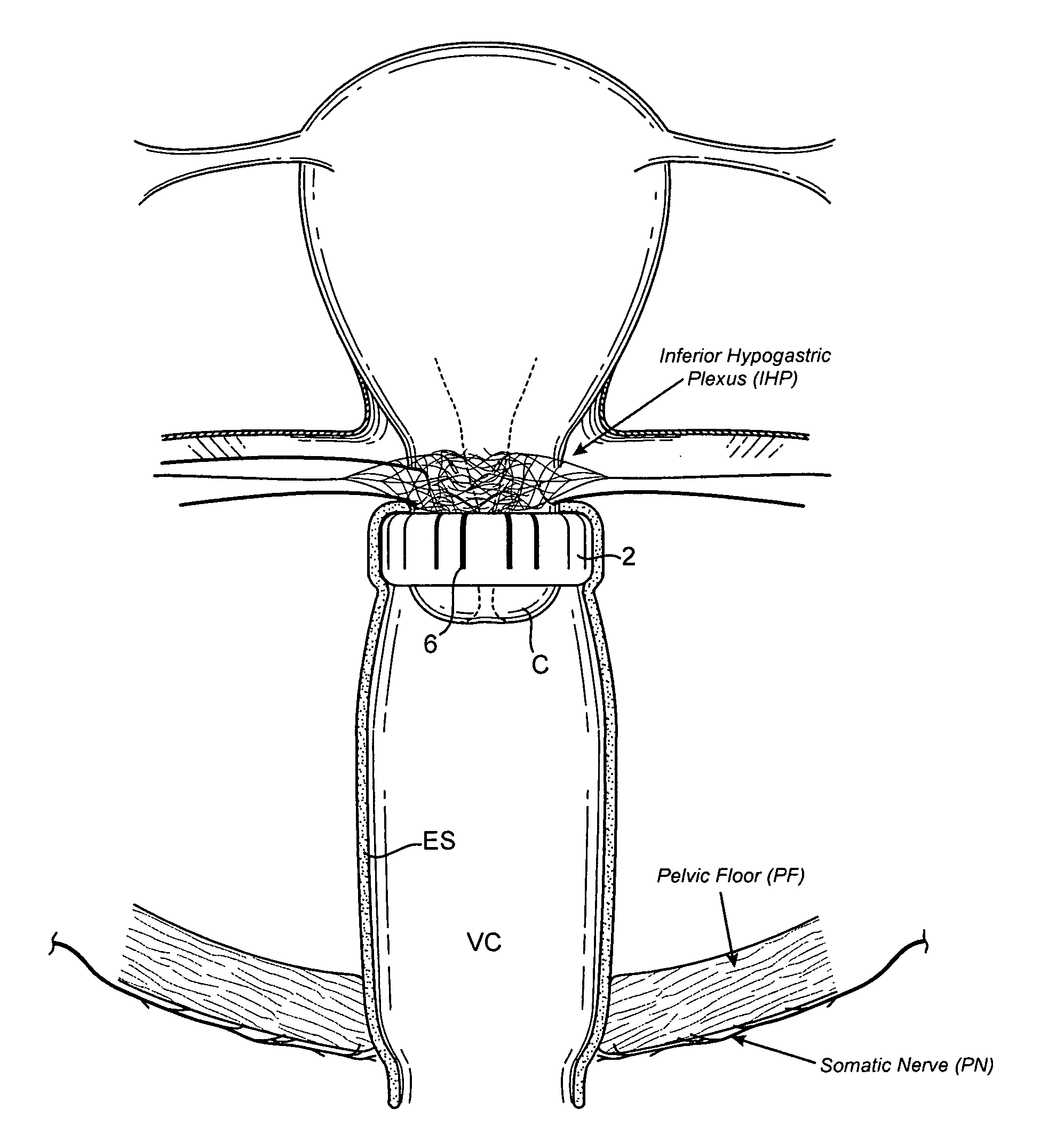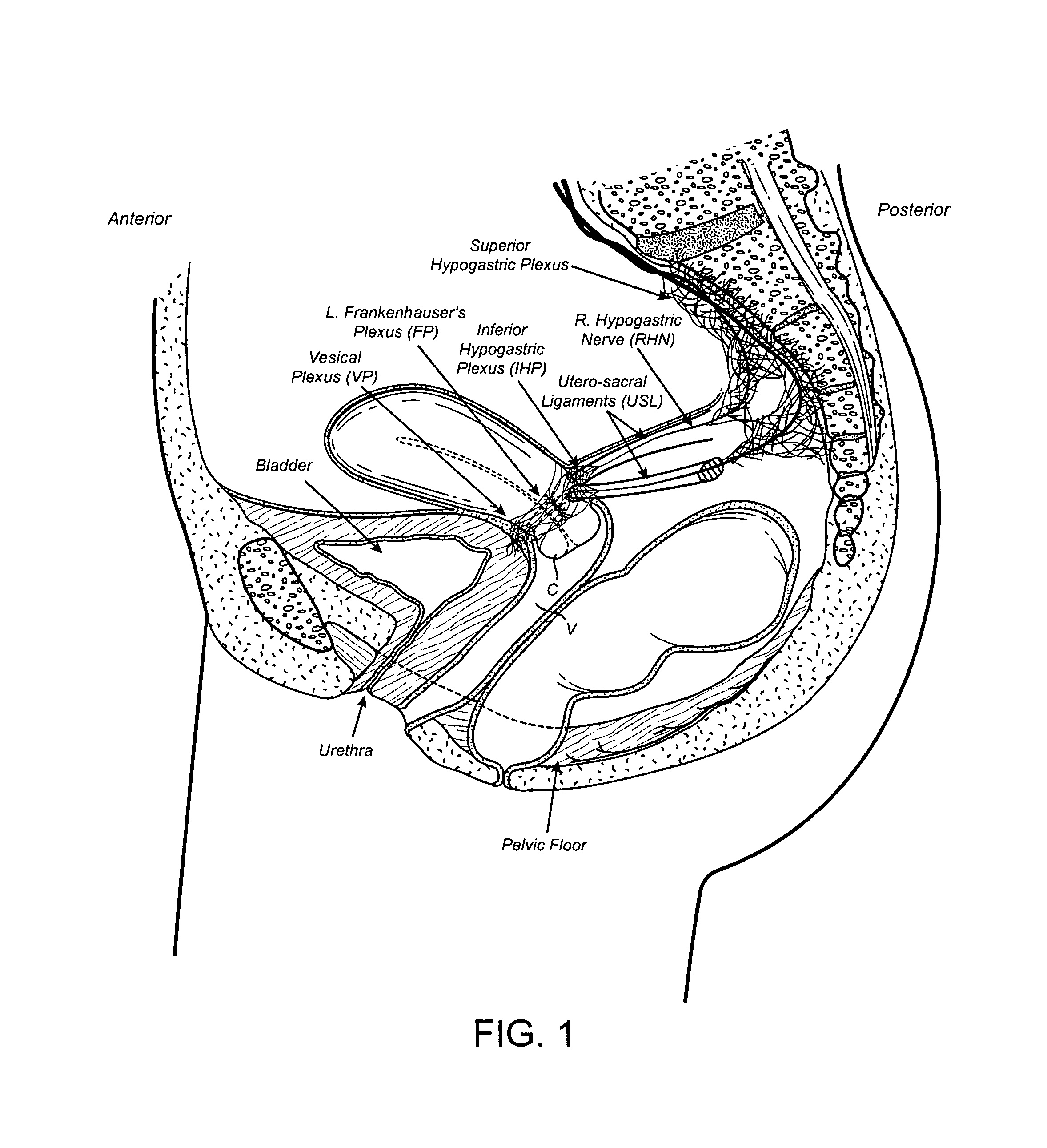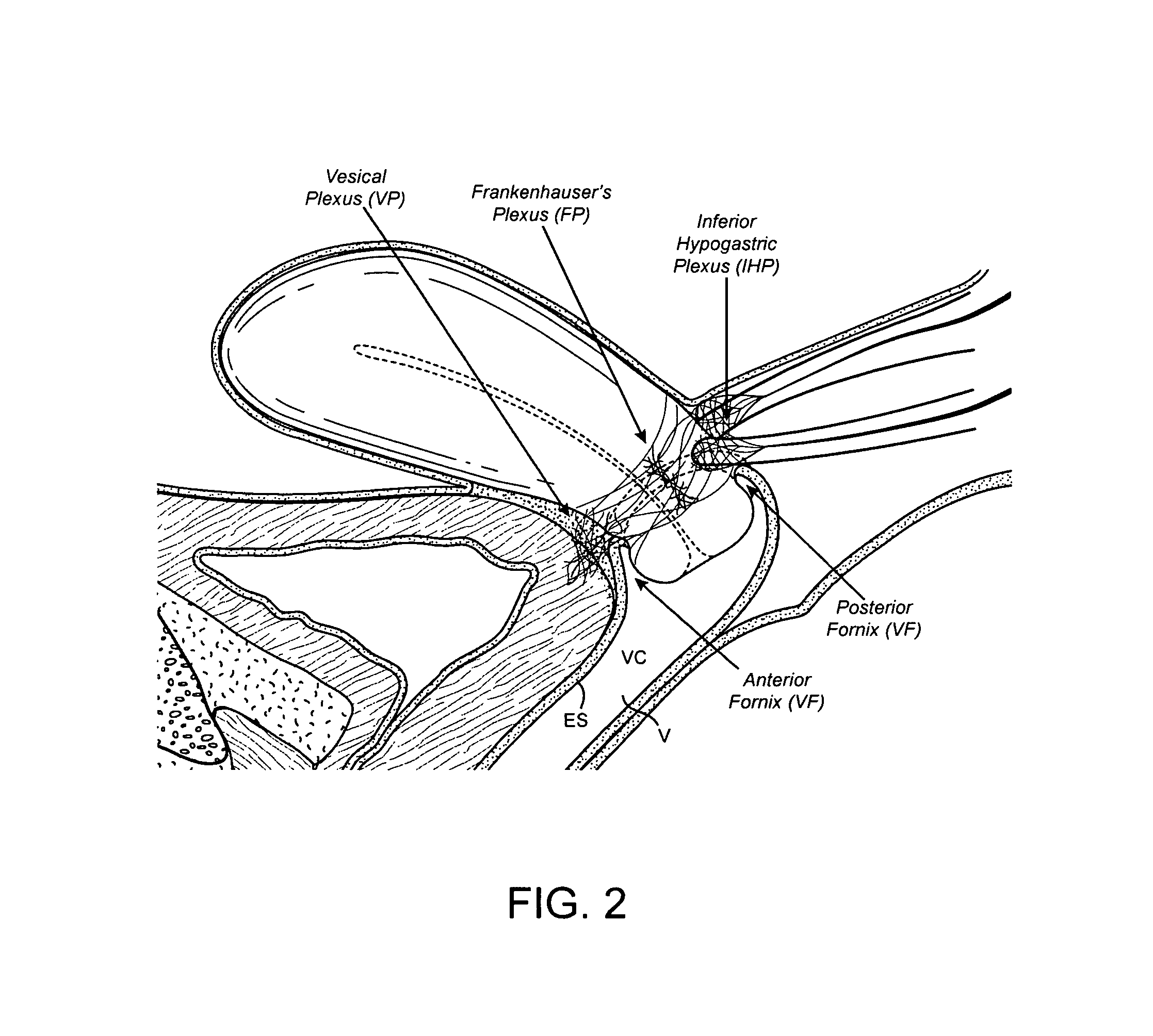Devices and methods for stimulating nerves
a nerve stimulation and nerve technology, applied in the field of nerve stimulation devices and methods, can solve the problems of insufficient treatment effect for the majority of patients, insufficient autonomic nerve signaling to the urethra, and strong and often uncomfortable urge to void, etc., to reduce habituation, increase electrode contact, and reduce the effect of habituation
- Summary
- Abstract
- Description
- Claims
- Application Information
AI Technical Summary
Benefits of technology
Problems solved by technology
Method used
Image
Examples
Embodiment Construction
[0066]For the purpose of defining the invention, various terms are now defined for use herein with reference to FIGS. 1-3. Firstly, the vagina V is a fibroelastic, muscular structure that forms a canal (hereinafter “vaginal canal” VC) having a distensible, flexible lining. The surface of this flexible lining has an internal or exposed surface ES. The vagina, and vaginal canal, as defined herein has a proximal end terminating at the proximal aspect of the cervix and a distal end at the introitus where it joins the vulva. If the cervix C has been removed or is congenitally absent, the proximal end of the vagina (and vaginal canal) is simply defined by the uppermost portion of the vagina, also known as the vaginal cuff.
[0067]As used herein, the shape of the vaginal canal VC defines a central axis CA. A cervical axis CVA extends through and is aligned with the cervical canal CC. The cervical axis CVA is also an axis of symmetry, as closely as can be approximated with the anatomy, for th...
PUM
 Login to View More
Login to View More Abstract
Description
Claims
Application Information
 Login to View More
Login to View More - R&D
- Intellectual Property
- Life Sciences
- Materials
- Tech Scout
- Unparalleled Data Quality
- Higher Quality Content
- 60% Fewer Hallucinations
Browse by: Latest US Patents, China's latest patents, Technical Efficacy Thesaurus, Application Domain, Technology Topic, Popular Technical Reports.
© 2025 PatSnap. All rights reserved.Legal|Privacy policy|Modern Slavery Act Transparency Statement|Sitemap|About US| Contact US: help@patsnap.com



